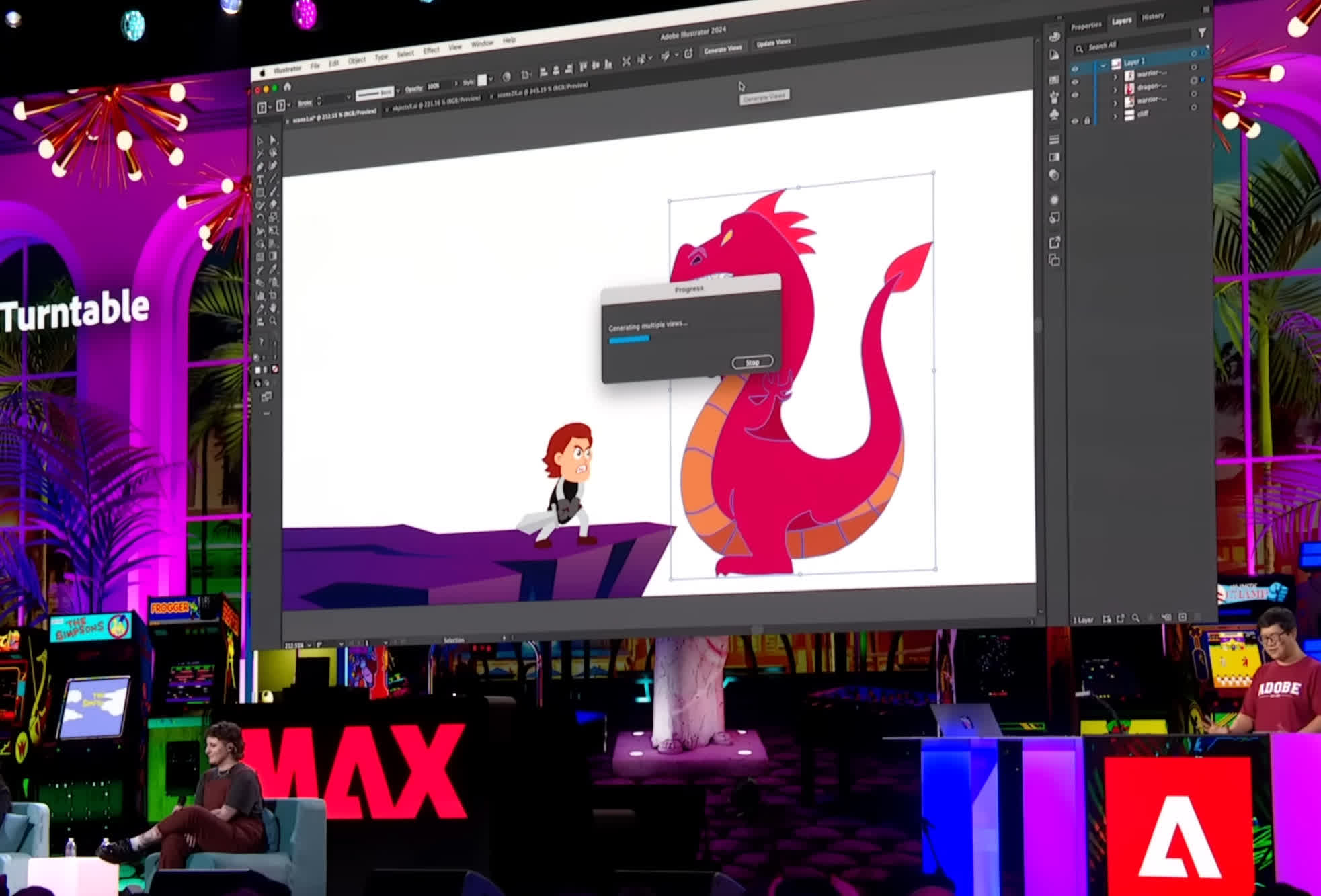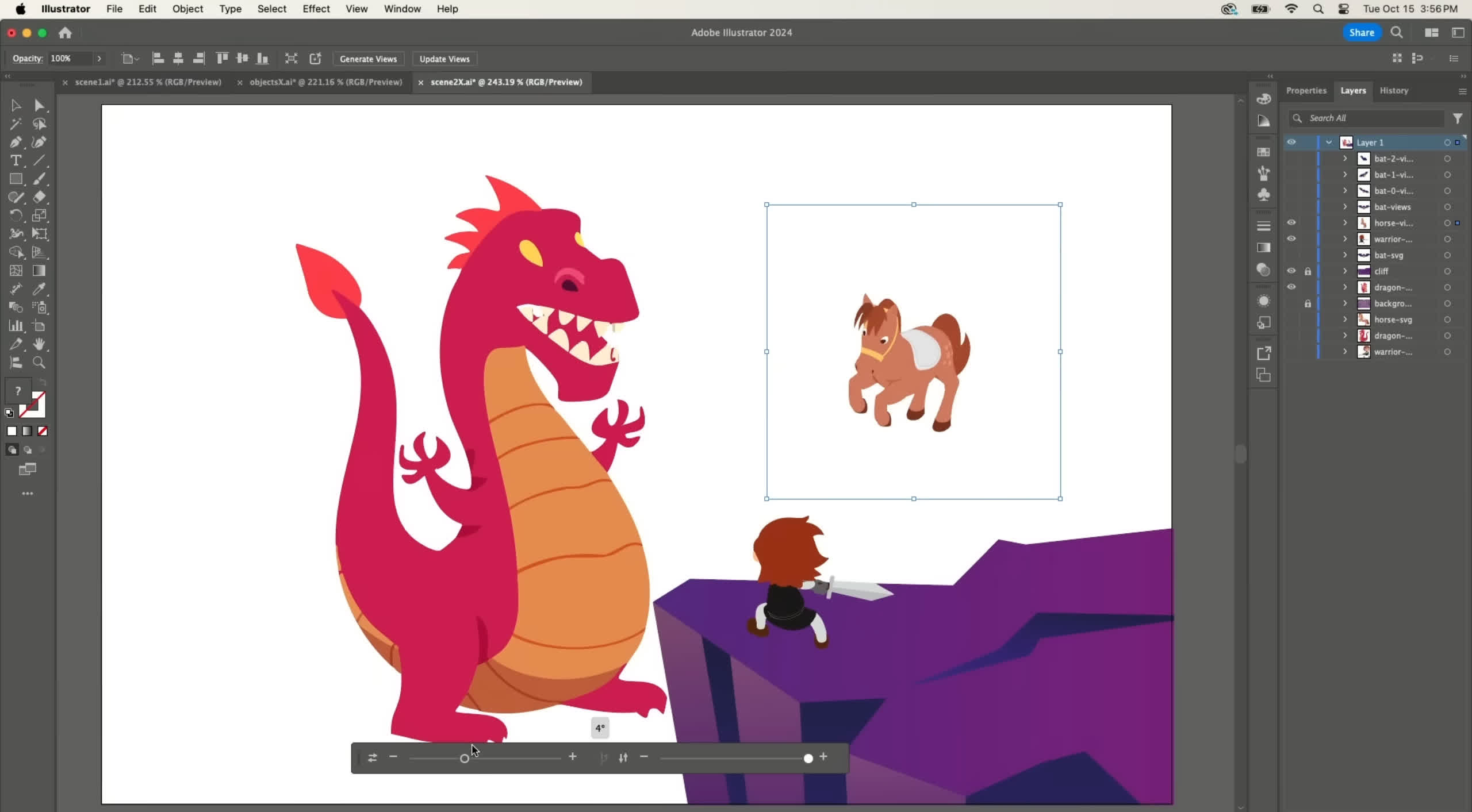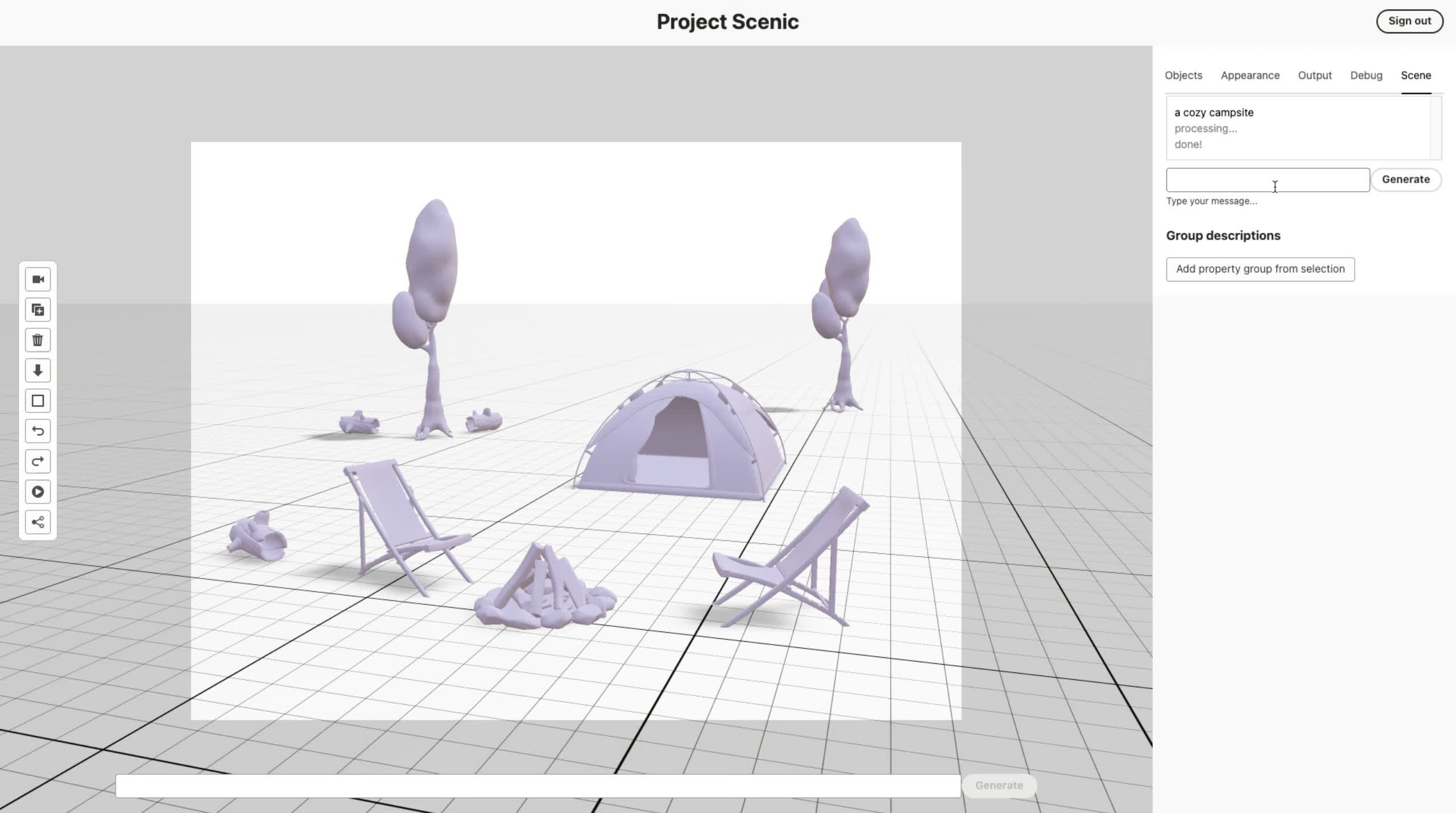What just happened? Adobe's annual MAX creativity conference is usually packed with innovative ideas, and this year was no exception. A highlight was Project Turntable, an experimental tool that allows users to seamlessly rotate 2D vector art within a 3D space while maintaining the aesthetics of the original.
Rotating a 2D illustration or graphic to a different angle usually requires redrawing the entire image from scratch, which can be a time-consuming process even for skilled artists. Adobe's new tool upends this by using advanced AI algorithms to reshape the vector art as it spins through three-dimensional space and intelligently fill in any gaps.
One of the demos showed a simple illustration of a dragon being rotated to face a warrior from a different perspective. As the image twists and turns, it takes on a 3D quality, almost appearing to be a physical object. Yet when it settles into its new orientation, the resulting graphic is unmistakably flat and two-dimensional.
Perhaps even more impressive is Project Turntable's ability to generate new elements based on the existing vector data. In the same dragon scene, a horse illustration with only two visible legs was rotated, revealing the AI had deduced and rendered the other two legs that were previously hidden.
Beyond this, Adobe also unveiled Project Scenic, an experimental tool designed to streamline 2D image creation. Normally, image generators don't let you customize each detail – a larger part of the scene is left to the AI to plan out.
But Project Scenic changes that, giving users granular control by letting them generate individual objects in a 3D scene layout. They can then adjust the camera positioning and have the AI generate a final 2D image based on the composed scene.
Another notable tool was Project Remix A Lot, which can take rough physical sketches and digitize them into editable vector art using generative AI. The tool can also automatically generate layout variations tailored for different aspect ratios and social media formats, even "irregular" ones.
It's important to note that these "Sneaks," as Adobe dubs them, are experimental projects designed to show off its cutting-edge research. There's no guarantee if or when any of these tools will be integrated into the company's commercial software, though there's a good chance of that happening considering how useful they appear.


